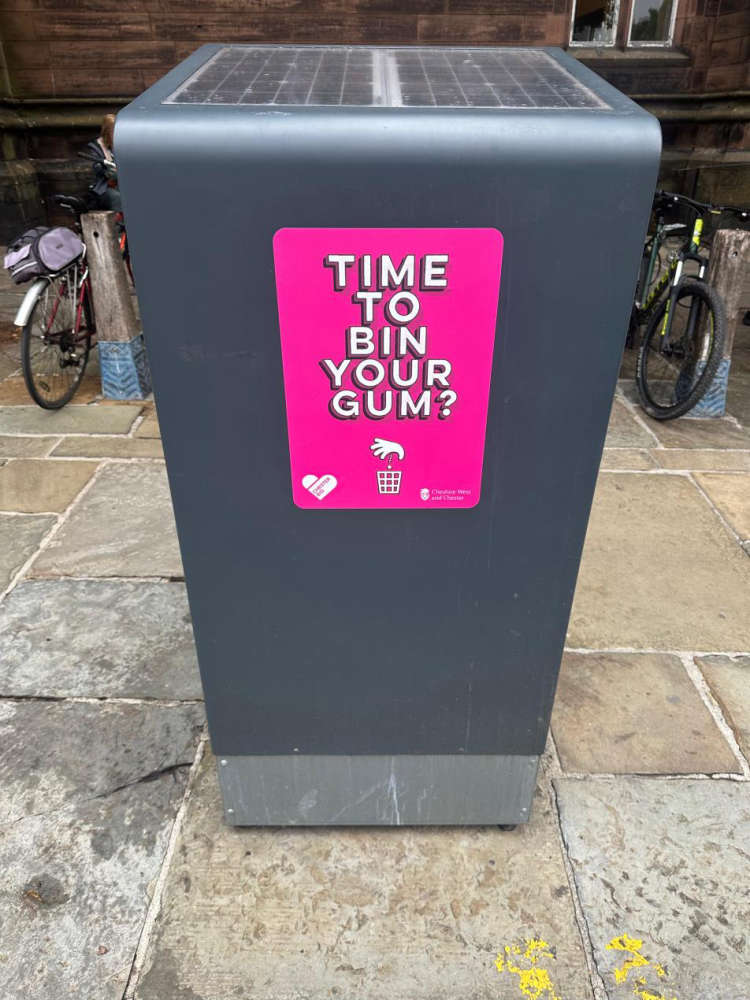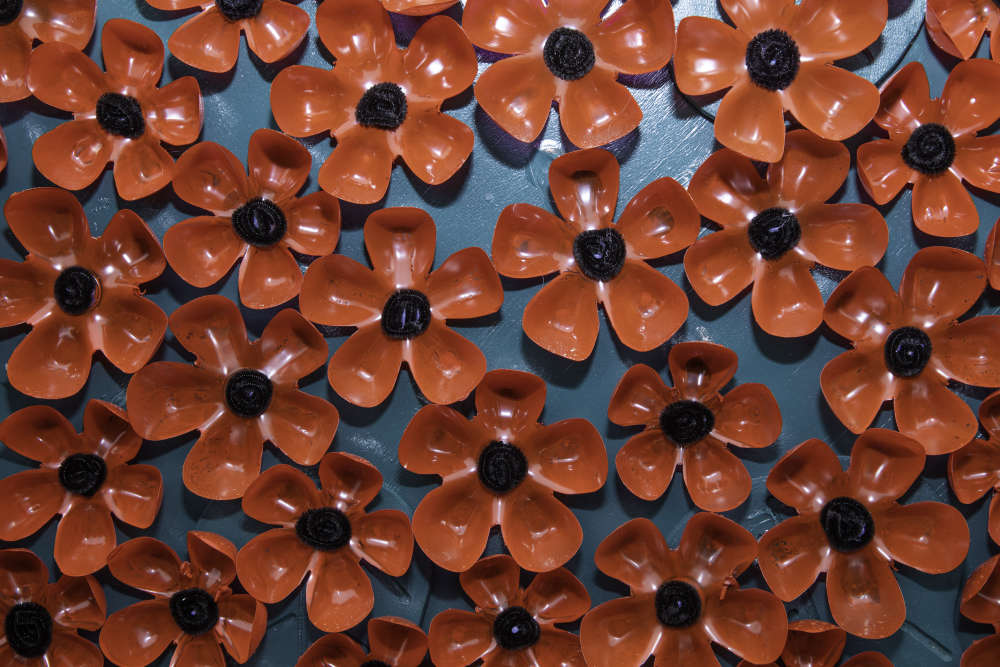
With 1,080 solar panels on its roof, and a host of sustainable features, the new multi-million-pound school campus in the village of Mynydd Isa, Mold, is now Flintshire County Council’s first net-zero carbon in operation school.
Flintshire County Council’s Climate Change Committee recently visited the Mynydd Isa Campus along with cabinet members, school representatives and the Welsh Education Partnership Company (WEPco) to find out more about the school’s sustainability credentials.
Attendees also powered up a specially commissioned neon sign with the word ‘Croeso’ (Welsh for ‘Welcome’) to symbolise the energy that the building is creating for itself.
Delivered by Robertson Construction North West, on behalf of WEPco, the state-of-the-art school is one of the most energy-efficient in Wales, demonstrating Flintshire’s commitment to reducing carbon emissions and creating a greener future.
Being net zero in operation means Mynydd Isa Campus has been designed to produce as much energy as it uses, thanks to a range of energy-saving features. One of the standout components is the impressive solar panel system with photovoltaic cells covering approximately 80% of the roof, an area of over 2,500m².
These panels are expected to generate over 300,000 kWh of electricity each year, reducing carbon emissions by more than 70 tonnes annually. During the summer months, any extra electricity produced will be sent back to the grid.
Due to the careful selection of materials which are less carbon intensive, the campus is also low in ‘embodied carbon’. Utilising air source heat pumps for heating and hot water, rather than fossil fuels, the campus also benefits from a special drainage system to manage rainwater naturally, helping to prevent flooding and support local wildlife.
The grounds have been designed to promote biodiversity, with green spaces, wildlife-friendly landscaping, and outdoor areas that encourage pupils to engage with nature. Recycled and low-carbon materials have also been used in the construction of the outdoor spaces including a play base made from recycled tyres.
Active travel is encouraged through new dedicated cycling and walking routes and electric vehicle charging points.
The two-storey, 10,500m² campus is able to accommodate 1,300 pupils, including 43 nursery-age children, 600 primary pupils, and 700 high school students. All pupils will benefit from the cutting-edge facilities designed for 21st-century learning. High school pupils were first to move to the campus earlier in May, with the remainer of pupils moving in after the summer break.
Mynydd Isa Campus is being built through the WEPco, using the Mutual Investment Model (MIM) developed by the Welsh Government to fund major capital projects.
Flintshire County Council Cabinet member for Education, Welsh Language, Culture and Leisure, Councillor Mared Eastwood said: “I was delighted to represent the Council’s Climate Change committee and see this remarkable project coming to life. It not only reflects our commitment to high-quality education but also to a greener, more sustainable future for our children.”
Elliot Robertson, Chief Executive Officer, Robertson Group, said:
“Delivering Mynydd Isa Campus as Flintshire’s first net-zero carbon in operation school marks a significant step forward for sustainable building in Wales.
“Collaborating with WEPCo and Flintshire County Council, this project underscores our dedication to delivering projects that support communities and promote a sustainable future. We will continue to maintain the campus through Robertson Facilities Management and look forward to being part of the community for many years to come.”
The Welsh Government’s Cabinet Secretary for Education Lynne Neagle said: “I am delighted that the new Mynydd Isa Campus is open for learners.
“So many pupils will benefit from these outstanding facilities which are net zero in operation, embedding our commitments towards reducing carbon emissions and tackling climate change. We are not just building a school, we're creating an environment where the next generation can learn first-hand about sustainability.”
Neil Cutting, Project Director at WEPCo, said:
"We're delighted with the net zero carbon solution for this project. A first of its kind for MIM, we are thrilled with the completed building which demonstrates how state of the art education facilities can be built responsibly.
“Together with our construction partners, WEPCo is proud to have been entrusted with delivering this special 3-16 education campus for Flintshire County Council and the communities of Mynydd Isa, now and into the future. Diolch yn fawr."
The school is part of the Welsh Government’s Sustainable Communities for Learning Programme, which is focused on modernising school buildings with sustainability at its heart. The project highlights the wider commitment of Flintshire County Council to tackle climate change and ensure that public buildings are built with the future in mind.
Sustainability Features:
- First Net-Zero Carbon School in operation in Flintshire - Mynydd Isa School is the first net-zero carbon school in operation within the county, setting a precedent for future educational buildings in the region.
- First Large-Scale Solar Installation on a School in Flintshire - A large-scale photovoltaic (PV) array has been installed on the school’s roof, providing a significant proportion of the building’s electricity needs. The solar panels are designed to maximise efficiency, reducing reliance on the grid and significantly lowering energy costs. The system is expected to generate clean energy for decades, cutting the school's carbon footprint and contributing to Flintshire’s renewable energy targets.
- Air Source Heat Pumps - These energy-efficient systems provide heating and hot water without reliance on fossil fuels.
- Sustainable Drainage Systems (SuDS) - The site features green infrastructure that manages rainwater naturally, reducing flood risks and supporting local biodiversity.
- Biodiversity Enhancements - Green spaces, wildlife-friendly landscaping, and outdoor learning areas encourage ecological engagement and support local habitats.
- Sustainable Travel Infrastructure - Dedicated cycle and walking routes, as well as electric vehicle charging points, promote active and low-carbon travel options for pupils and staff.
- Lighting - Natural daylight is used wherever practical to reduce the energy use associated with electrical lighting and high efficiency lighting systems provided with manual on and automatic off absence detection controls.
- Concrete - A low carbon cement significantly reduces the amount of carbon being used.


 Man jailed for 16 years after being found guilty of rape
Man jailed for 16 years after being found guilty of rape
 Ellesmere Port community projects awarded share of Police and Crime Commissioner’s £150k fund
Ellesmere Port community projects awarded share of Police and Crime Commissioner’s £150k fund
 Chester community projects awarded share of Police and Crime Commissioner’s £150k fund
Chester community projects awarded share of Police and Crime Commissioner’s £150k fund
 Council completes chewing gum cleaning project
Council completes chewing gum cleaning project
 Chester Market celebrates three years of success
Chester Market celebrates three years of success
 Chester and Wirral Football League - Latest Results
Chester and Wirral Football League - Latest Results
 Blues Match Report: Chester FC 1 - 1 Marine
Blues Match Report: Chester FC 1 - 1 Marine
 Wanted man from Ellesmere Port arrested and charged
Wanted man from Ellesmere Port arrested and charged
 'Winter Warmer' initiative for local over 60’s in North Wales
'Winter Warmer' initiative for local over 60’s in North Wales
 Inaugural meeting of the Cheshire and Warrington Combined Authority Shadow Board
Inaugural meeting of the Cheshire and Warrington Combined Authority Shadow Board
 Cheetah brothers arrive at Chester Zoo
Cheetah brothers arrive at Chester Zoo
 Ex-Chester FC star helps create stunning poppy tribute
Ex-Chester FC star helps create stunning poppy tribute
 FREE CHESTER CONCERT SET TO CELEBRATE WORK OF RENOWNED NORTH WEST BASED COMPOSER
FREE CHESTER CONCERT SET TO CELEBRATE WORK OF RENOWNED NORTH WEST BASED COMPOSER
 MUSIC BY RENOWNED WELSH FEMALE COMPOSER TO FEATURE IN WREXHAM ORCHESTRA REMEMBRANCE CONCERT
MUSIC BY RENOWNED WELSH FEMALE COMPOSER TO FEATURE IN WREXHAM ORCHESTRA REMEMBRANCE CONCERT
 Blues Match Report: Cambridge United 3 - 0 Chester FC
Blues Match Report: Cambridge United 3 - 0 Chester FC
 Blues Match Preview: Cambridge United v Chester FC
Blues Match Preview: Cambridge United v Chester FC
 Cheshire Constabulary welcomes its newest four-legged crime fighter ahead of her Police Dog training
Cheshire Constabulary welcomes its newest four-legged crime fighter ahead of her Police Dog training
 Appeal to trace wanted man from Ellesmere Port
Appeal to trace wanted man from Ellesmere Port
 Lord Mayor of Chester and Chair of CWaC to lead Chester’s Acts of Remembrance
Lord Mayor of Chester and Chair of CWaC to lead Chester’s Acts of Remembrance
 Ellesmere Port Market unveils local schools’ artwork display
Ellesmere Port Market unveils local schools’ artwork display
Comments
Add a comment